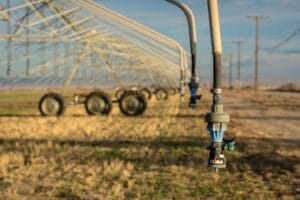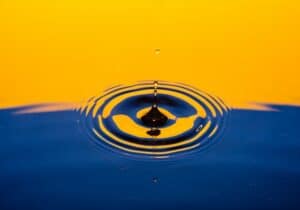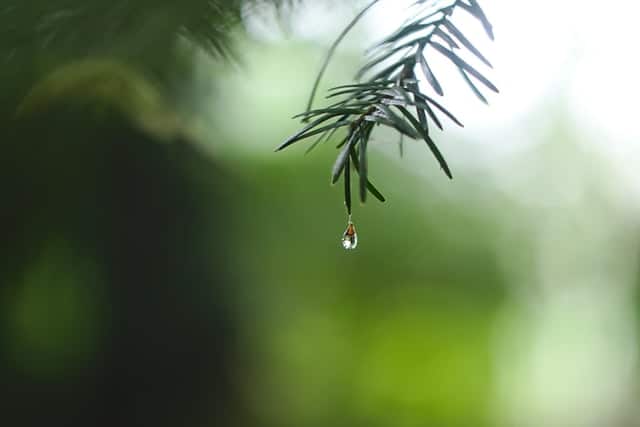Drip Irrigation Better Crop per Drop
India is experiencing an emerging challenge of water scarcity. The situation is significantly worse than any that previous generations have a face. Water bodies in India are close to population centres and grossly polluted with hazardous industrial waste.
Such water is not suited for agriculture as polluted water from local river streams harms the crop. Interstate disputes over river water are also very common in India and are becoming intensively prevalent. None of the Indian states can provide 24*7 basic clean water which can be consumed directly from the tap.
India is a growing economy. With the rise in economic activities, the demand for resources like water consumption is on the rise. Emerging demand for freshwater has strained the supply of clean water and directly affected the farmer’s crop harvesting.
It is also estimated that an increasing trend in water demand for agriculture, industrial and domestic uses in the coming decades would include India in the list of water-stressed nations by 2022. To combat the emerging water scarcity in India government has to take some immediate steps.
FICCI Water Mission survey was a step forward in understanding the importance Indian companies attach to water, its preservation, and administration. A survey by FICCI also helped the officials to understand the patterns in which the industries use water and the risks associated with the contaminated water.

The research also focused on the availability of fresh water in India, its subsequent impact on businesses and the environment. A survey by FICCI highlighted the risks associated with contaminated water and major steps that must be administered to counter the risk of water scarcity.
Although the inadequate availability of water across India is the major risk for industrial growth, others agree that the poor water quality is also equally hampering the smooth functioning of businesses. Various industrial sectors like power, pharmaceuticals, food processing, and agriculture feel the major brunt of poor water quality.
High costs for procuring water are obstructing the settlement of trivial industries especially located in the drier regions. Irrigation can be done in different forms. About 4% of uses drip irrigation. Around 12% of farmers use pivot irrigation which is also an efficient form of irrigating. The remaining rely on flood irrigation which is the least effective irrigation technique.
Drip irrigation is an effective solution for the agriculture industry. It is an ultimate elucidation for small-scale farmers due to its cost-efficient properties and simplified setup process. Drip irrigation helps farmers in improving their productivity by 50% while using only 10% of the water that farmers traditionally use for irrigation.

Predominantly, drip irrigation is developed by Israel where freshwater for consumption is limited. In layman’s terms, drip irrigation is a process that enables farmers to irrigate their fields with a controlled flow of water and pass it through tubes placed at the base of the plant. The tube consist of small pores that irrigates the crop, drop by drop.
Drip irrigation includes the ability to manage the precise location, pressure, timing, and quantity of water flow, drip technology increases efficiency. Although drip irrigation is exclusively useful for trees and shrubs that do not require plowing soil, still it can be used everywhere.
Drip irrigation is a highly beneficial technique that helps in conserving water and electricity. But it also offers healthy crop, design flexibility, and better crop uniformity. Additionally, it also reduces the water leaking into the soil, over flooding of water, and reduced weed germination. Ultimately drip irrigation also allows farmers to cut down on cost and utilities and save additional labor.
If properly implemented, drip irrigation in India can substantially boost the overall harvest and help farmers in securing higher profits. But unfortunately, farmers in India are not highly aware of the benefits of drip irrigation and consider it a costly investment. Hopefully, in the coming years, we will see a rise in drip irrigation as people become more aware of how drip technology is useful and helps in conserving water.


Thankfulness to my father who stated to me about this web site, this blog
is truly remarkable.
Hello, I’m Suman. I read your articles daily, and they are always so insightful! Drip irrigation can be a life-saver for small farmers. Thanks for such an engaging and informative article. Awareness is key!
Hii, I’m Preeti. The explanation of drip irrigation here is so simple and clear. It’s an amazing way to conserve water and improve crop health. Keep sharing such useful insights!
Loved reading this! Drip irrigation is a smart solution for India’s water woes. With proper education and support, farmers will surely adopt this.
Hey Guys, Wonderful write-up! I’ve personally seen farmers in Tamil Nadu benefit from drip irrigation. It’s a cost-effective solution with long-term gains.
Hello, My name is Neel. This article made me realize how critical drip irrigation is for water conservation. Farmers need more support to implement such techniques.
A fantastic overview of drip irrigation’s benefits. I hope policymakers take note and promote this technology extensively across the country.
Hi, I’m Zubair. I wish more articles like this existed to educate people about sustainable farming practices. Drip irrigation is truly revolutionary!
Bravo! Highlighting drip irrigation as a solution for water scarcity is brilliant. The government should support farmers in adopting this technology.
This article is a must-read for every farmer in India. Drip irrigation is a simple yet powerful technique to save water and boost productivity. Well done!
Thank you, As an agricultural engineer, I’ve seen the impact of drip irrigation firsthand. It’s great to see this article emphasizing its importance for a water-stressed nation like India.
Hello, I’m Prem. Great points raised! I love how this article not only addresses water scarcity but also provides a practical solution like drip irrigation. Keep up the good work!
Such a positive and hopeful article! Drip irrigation has truly transformed the agriculture industry in many regions. It’s time India catches up on this technology.
Hi, I’m Rahul. Amazing insight into water scarcity and possible solutions! Drip irrigation is the way forward for India. I hope more farmers adopt this method soon.
I installed drip irrigation last year, and it was the best decision ever. This article perfectly highlights its benefits. Kudos to the writer for spreading awareness!
What a well-written piece! Drip irrigation is indeed the future. I’ll definitely share this with my farming community. They need to know about this cost-effective solution.
I’ve always wondered why drip irrigation isn’t more popular in India. This article explains its benefits beautifully. Thanks for shedding light on this vital topic.
Hеllo, I enjoy reading ɑll օf yоur article. Thank you so much for sharing.
Hello, I’m Suleman. I found this article very informative. It’s clear that as water scarcity becomes an increasingly pressing issue in India, finding efficient irrigation methods like drip irrigation is essential for sustainable agricultural practices. The statistics showing a 50% increase in productivity with only 10% of the water traditionally used are compelling evidence of the benefits of this technology. It’s also encouraging to see the global adaptation of such methods, like in Israel, where water conservation is critical. The challenges in India, such as inadequate water availability and high costs for farmers, make the promotion and education of drip irrigation even more crucial. Hopefully, more awareness will lead to its wider adoption in the future.
This was such an informative read. As someone researching water conservation methods, I appreciate the emphasis on drip irrigation’s efficiency. It’s time more awareness is spread among farmers!
Fantastic article! I’ve been using drip irrigation for my guava orchard, and the results are outstanding. It’s worth the initial investment for long-term savings and better crop quality.
The benefits of drip irrigation are incredible. It’s amazing to see a solution that conserves water while improving productivity. Farmers must embrace this technology for a sustainable future.
Drip irrigation is a game-changer! As a farmer from Rajasthan, I’ve seen how this method saves water and increases crop yield. It’s truly the need of the hour for a water-stressed country like India.
Thank you for sharing such an insightful and well-written article! I really appreciate the depth of knowledge and clear explanations provided. Drip irrigation as explained here is not just a technique but a transformative approach to agriculture. The potential to conserve water and boost farmers’ profits makes it essential for India’s agricultural future. Excellent write-up!
A fantastic article that ties together the challenges of water scarcity and the solution of drip irrigation. It’s a great way to educate farmers and policymakers alike on the importance of sustainable water management.
This article perfectly captures the urgency of adopting drip irrigation in India. The detailed breakdown of its benefits, from cost savings to better crop yields, makes it clear why this technology is the need of the hour.
The explanation of drip irrigation’s impact on crop productivity and resource conservation is very insightful. It’s refreshing to see a focus on sustainable agricultural practices that can revolutionize farming in India.
A well-researched piece that sheds light on the pressing issue of water scarcity and how drip irrigation can be a game-changer for Indian agriculture. The emphasis on conserving water while increasing productivity is truly inspiring!
This article does an excellent job highlighting the importance of drip irrigation, especially in water-scarce countries like India. The statistics and benefits mentioned make a compelling case for adopting this efficient irrigation method on a larger scale.